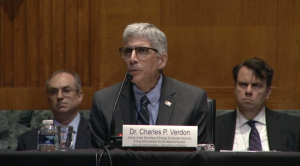Long Range Standoff Weapon (LRSO)
-
 Air Force
Air ForceU.S. Air Force Holds Critical Design Review for LRSO
The U.S. Air Force said that it conducted a Critical Design Review (CDR) for the Raytheon Technologies [RTX] AGM-181 Long Range Stand-Off (LRSO) nuclear-tipped cruise missile on Feb. 27-March 2 […]
Tagged in: -
 Air Force
Air ForcePentagon May Finish Hard and Deeply Buried Targets Study This Spring
The Pentagon may finish a study on a strategy to defeat Hard and Deeply Buried Targets (HDBTs) this spring, the head of U.S. Strategic Command (USSTRATCOM) said this week at […]
Tagged in: -
 Uncategorized
UncategorizedSTRATCOM Nominee: Development of LRSO for U.S. Air Force On Track
Development of the Raytheon Technologies‘ [RTX] AGM-181 Long-Range Standoff Weapon (LRSO) to replace the Boeing [BA] AGM-86 Air Launched Cruise Missile (ALCM) has raised no technology readiness level (TRL) concerns […]
Tagged in: -
 Nuclear Modernization
Nuclear ModernizationPlutonium Pit Master Sked Coming This Year; First W80-4 Cruise Missile Warhead Likely Late, NNSA Admin Testifies
This year, the National Nuclear Security Administration (NNSA) will finish an integrated master schedule for building a new plutonium pit manufacturing complex and this summer it will quantify delays to […]
-
 Nuclear Modernization
Nuclear ModernizationLRSO Program Receives Nearly $382 Million Boost in USAF Request
The U.S. Air Force in fiscal 2023 is requesting almost $981 million for the Raytheon Technologies‘ [RTX] Long Range Standoff Missile (LRSO), nearly $382 million more than appropriated by Congress […]
-
 Nuclear Modernization
Nuclear ModernizationCOVID Could Spell Delay for Nuke Refurb but ‘A Lot of Margin’ Remains
WASHINGTON — COVID-19-related delays at the Department of Energy and its vendors might delay refurbishment of a warhead intended for next-generation nuclear-tipped air-launched cruise missiles, the acting head of the […]
Tagged in: -
 Nuclear Modernization
Nuclear ModernizationDoE Should Delay Nuclear Warhead For Cruise Missile or Justify Why it Won’t, GAO Says
The National Nuclear Security Administration should either delay by a year its promised delivery-date for the proof-of-concept unit of the next-generation nuclear cruise-missile warhead, or justify why it won’t, the […]
-
 Nuclear Modernization
Nuclear ModernizationLRSO Might Be Early, Top Air Force Nuke General Says
Two key nuclear delivery systems, the Long Range Standoff Weapon cruise missile and the Ground Based Strategic Deterrent (GBSD) intercontinental ballistic missile should be ready on time — the cruise […]
-
 Budget
BudgetNNSA Again Seeks Substantial Increase for W80 Refurb
Proportionally or by raw dollars, the W80-4 life-extension program would get the biggest increase of any active Department of Energy warhead refurbishment in 2020, if the Trump administration’s budget request […]
-
 International
InternationalAs Pompeo Issues INF Ultimatum, Defense Hawks in Washington Suggest Weapons for Post-treaty World
The day the U.S. delivered an ultimatum that it could leave the intermediate range nuclear forces treaty by February, hawkish think-tankers and former government shared weapons shopping lists for the […]
